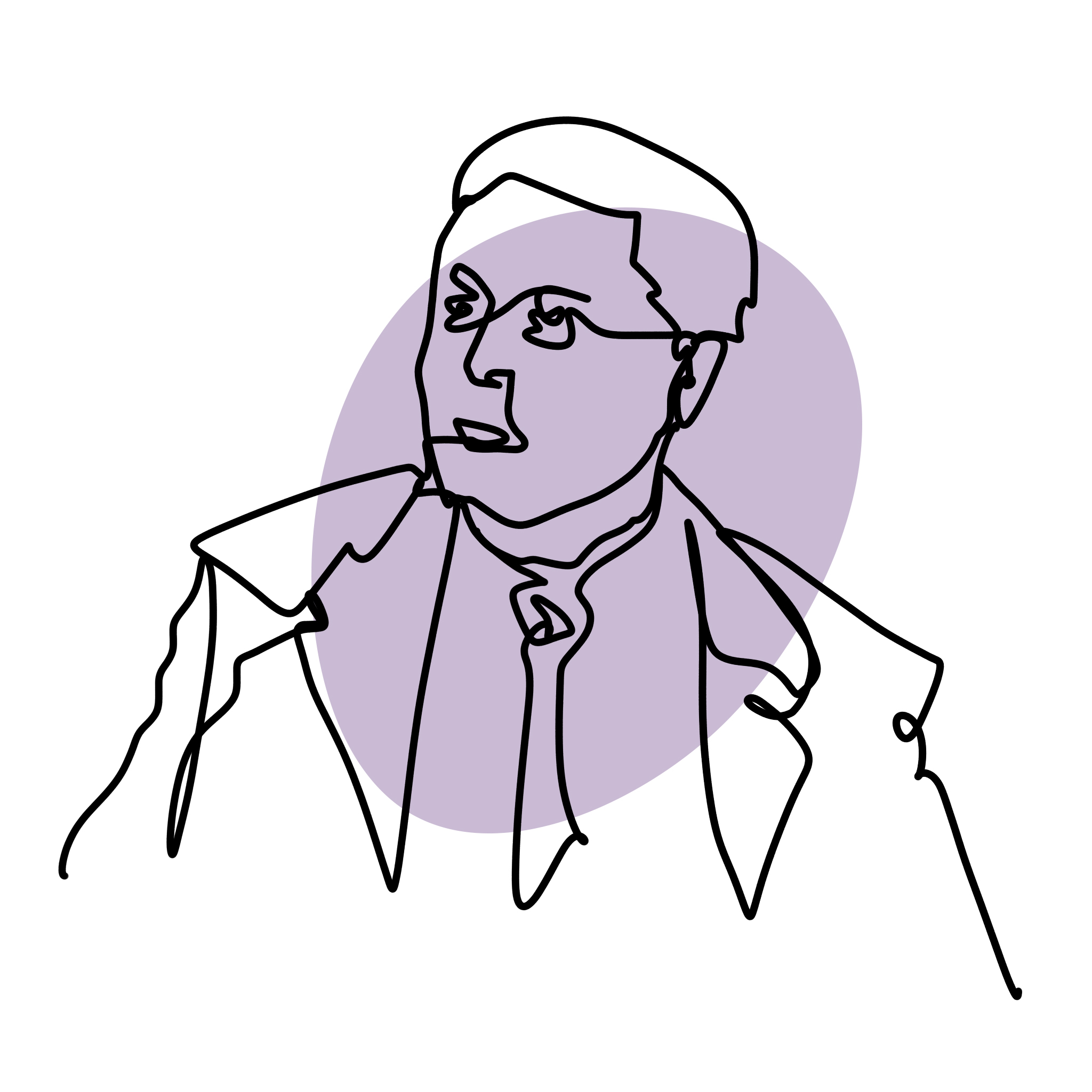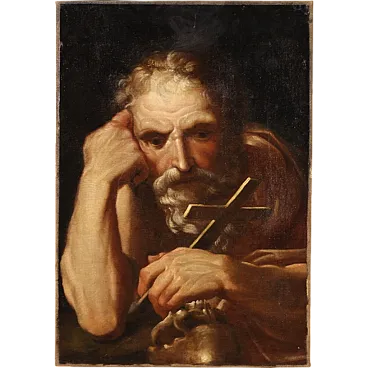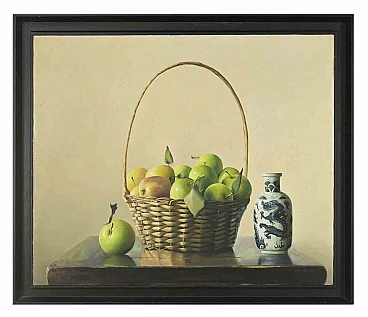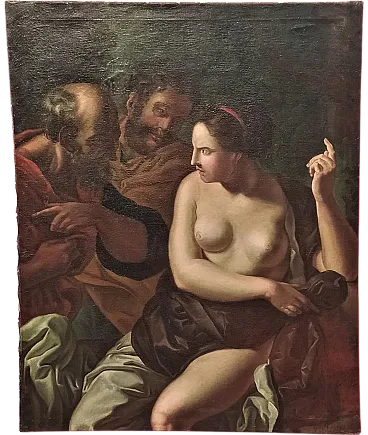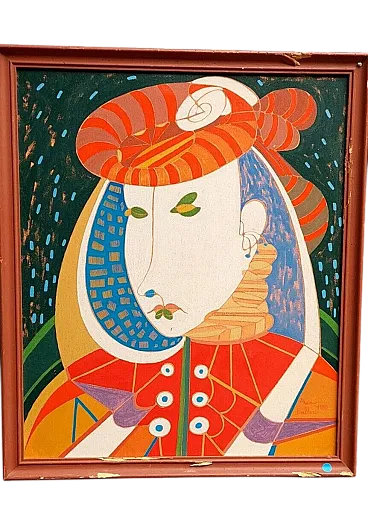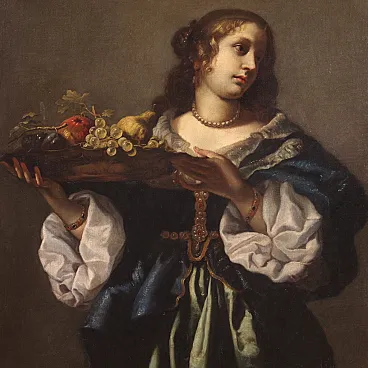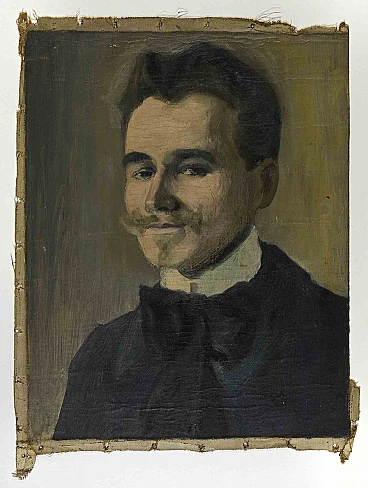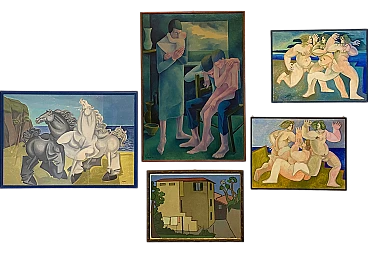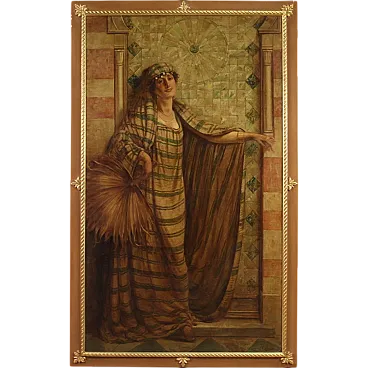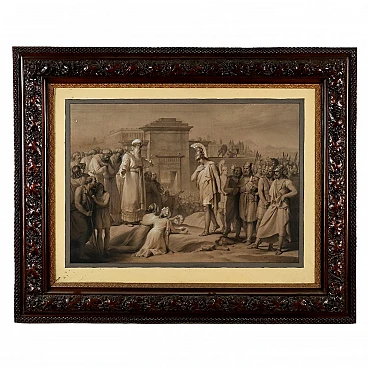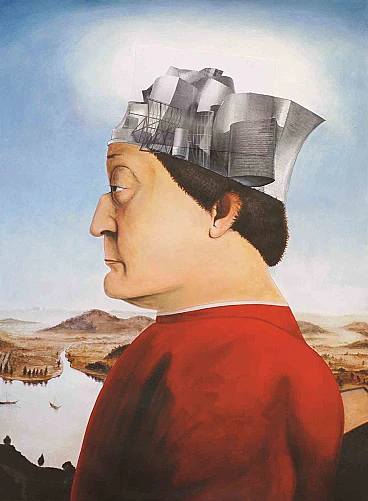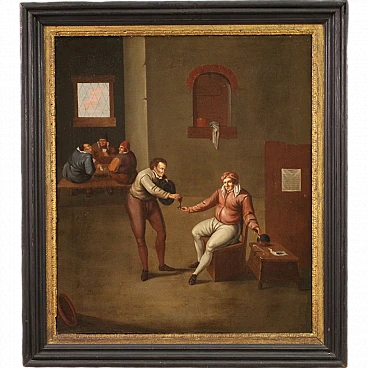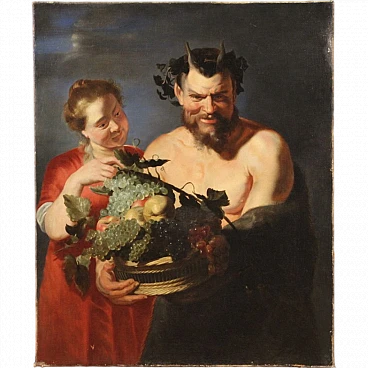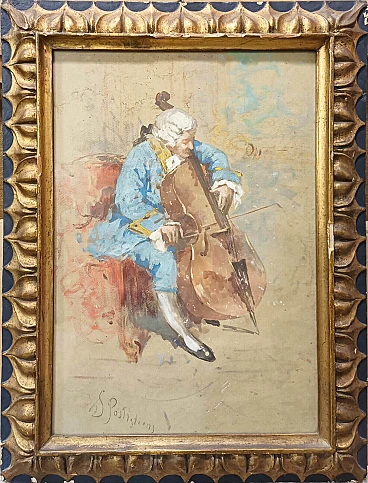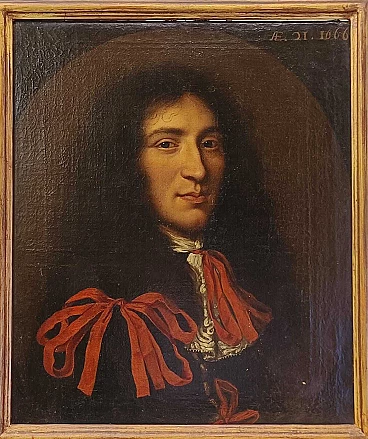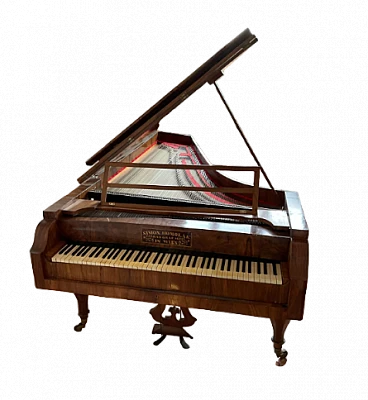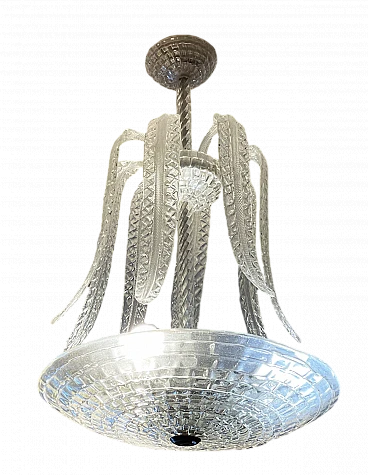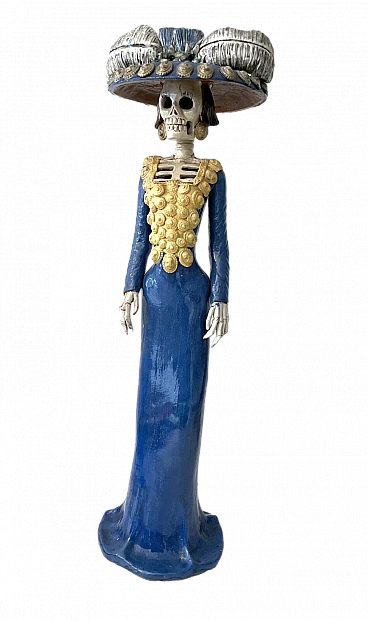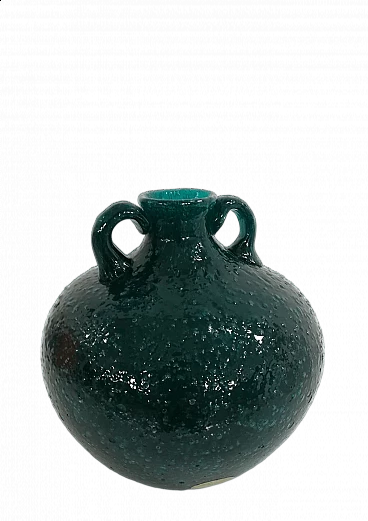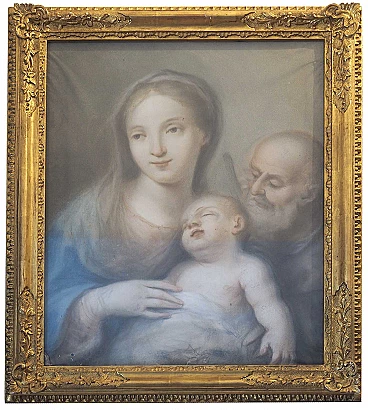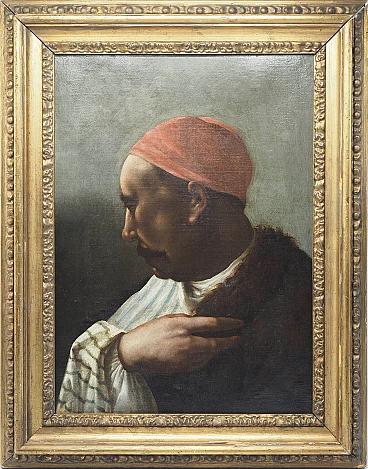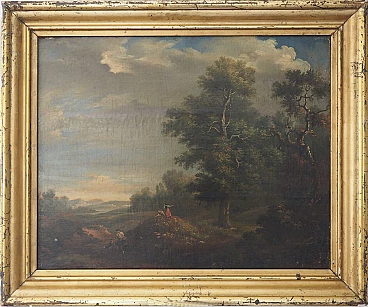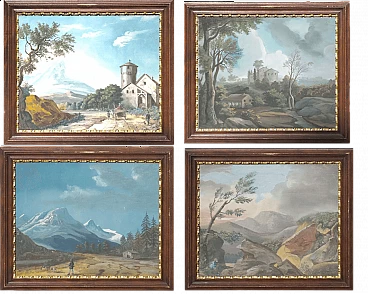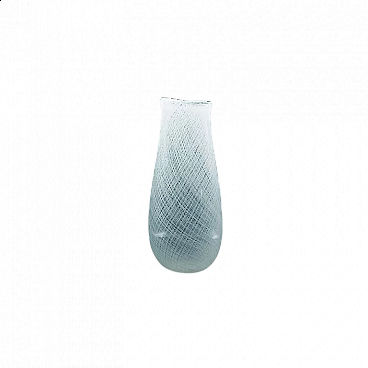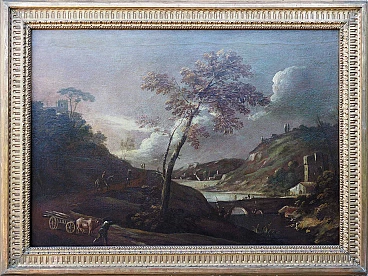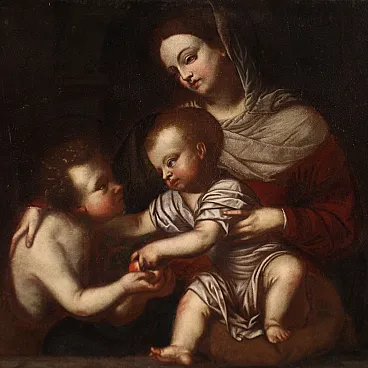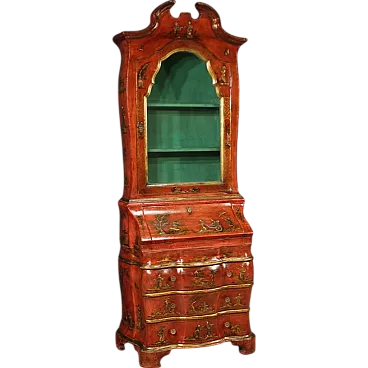Oil painting on panel by Cosimo Privato (Venice, 1899 – 1971) depicting a family portrait, 20th century. Within frame. Signed lower right "C. Privato". The painting, in an excellent state of preservation, depicts a middle-aged couple sitting, with the female figure positioned to the side in front of the male one. Extremely realistic, like the entire series of portraits created by the well-known Venetian painter, the work also stands out for the careful use of the material and the choice of colors with the clear contrast between light and dark, with the white of the shirt and the color red of the woman's lips to stand out clearly. Born in Venice in 1899, Privato entered the Royal School of Art applied to Industries in 1919, based in the ancient Carmini convent, where he attended the pictorial decoration section and later obtained the qualification for professional artistic teaching. Like many young artists of the same generation (Juti Ravenna, Neno Mori, Eugenio Da Venezia, Luigi Scarpa Croce and others), he turned to the activity of the Opera Bevilacqua La Masa, which since 1908 has reserved for young artists the possibility of exhibiting in the halls of Ca' Pesaro. Here Privato made his debut in the annual collective exhibition of 1920 with three works (The Eremitage, Self-portrait, Portrait). Although it is a particular edition, without the protagonists of the first Capesarina season, in fact the protest of the "dissident" artists, who exhibited in parallel at the Geri Boralevi gallery in Piazza San Marco, was raging, it represents for the artist the beginning of continuous participation in the events of the Bevilacqua La Masa, which he attended until the thirty-first edition of 1940. From 1922 to 1923 he was granted, on the third floor of Ca' Pesaro, a studio to practice his artistic activity (assignment renewed for the three-year period 1925 -1927); in 1932 he was also a member, together with Carlo Dalla Zorza, Juti Ravenna, Bruno Saetti and Toni Lucarda, of the acceptance jury of the exhibition. It is undoubtedly from the mid-1920s that his work achieved considerable notoriety at a local and national level. From 1926 to 1938 his paintings appeared at the International Art Exhibition of the City of Venice, where he stood out among the youngest exhibitors; in the same years, he also participated in the exhibitions of Italian art organized abroad by the Biennale itself (an example of which, in 1933, was the exhibition of modern Italian art organized by the National Fascist Fine Arts Union and presented by Antonio Maraini at the Künstlerhaus in Vienna ). We can also remember, in the Italian context of the 1920s and 1930s, the important participations in the III Roman Biennale (1925) and the II Quadrennial of Rome (1935), at the International Fine Arts Exhibitions of Fiume (1925, 1927), at the exhibitions organized by the Society for Fine Arts of Milan (1924, 1925) and at the Trade Union Exhibitions of the Tre Venezie. The numerous purchases that took place on the occasion of the exhibitions (by King Vittorio Emanuele III, the City of Bari, the Cassa di Risparmio di Venezia, the Municipality of Venice, the Prefecture of Venice, the Ministry of National Education, the Banca d' Italy) confirm the appreciation received. Although late, if considered in relation to the times and the contemporary development of the avant-garde currents, the prolific season of the '20s and '30s constitutes a significant piece of the figurative tradition of the Venetian and Venetian areas: the artist's pictorial production shows in fact notable qualities both in the application of the colour, thanks to the agility of the brushstroke and the wise choice of shades, as well as in the conception and rendering of the subjects; if it is the portrait genre that is preferred, and more generally the composition with figure, Privato does not lack inventiveness and over the years has created an eclectic catalog of characters and situations, showing a strong decorative streak combined with lively qualities of narrator. In the 1940s and especially in the post-war period, Privato's exhibition activity was limited, in the face of a progressive withdrawal from the public scene and an ever-increasing distance from the Venetian environment; we note some personal exhibitions held in Venetian galleries (at the Venezia gallery in 1945, at the Sandri gallery in 1946, at the Ongania gallery in 1947) and his participation in the group of "della Valigia" painters, gathered around the Hotel Gorizia. Rather, Mario Coscia's Galleria Trieste assiduously hosted the artist's personal exhibitions from the 1940s to the end of the 1950s (1941, 1947, 1950, 1951, 1952, 1954, 1956), in which the prevailing genre scenes (The Masquerade, 1947) and a revisitation, sometimes rapid and summary, of the subjects that have dotted the entire span of his artistic career.
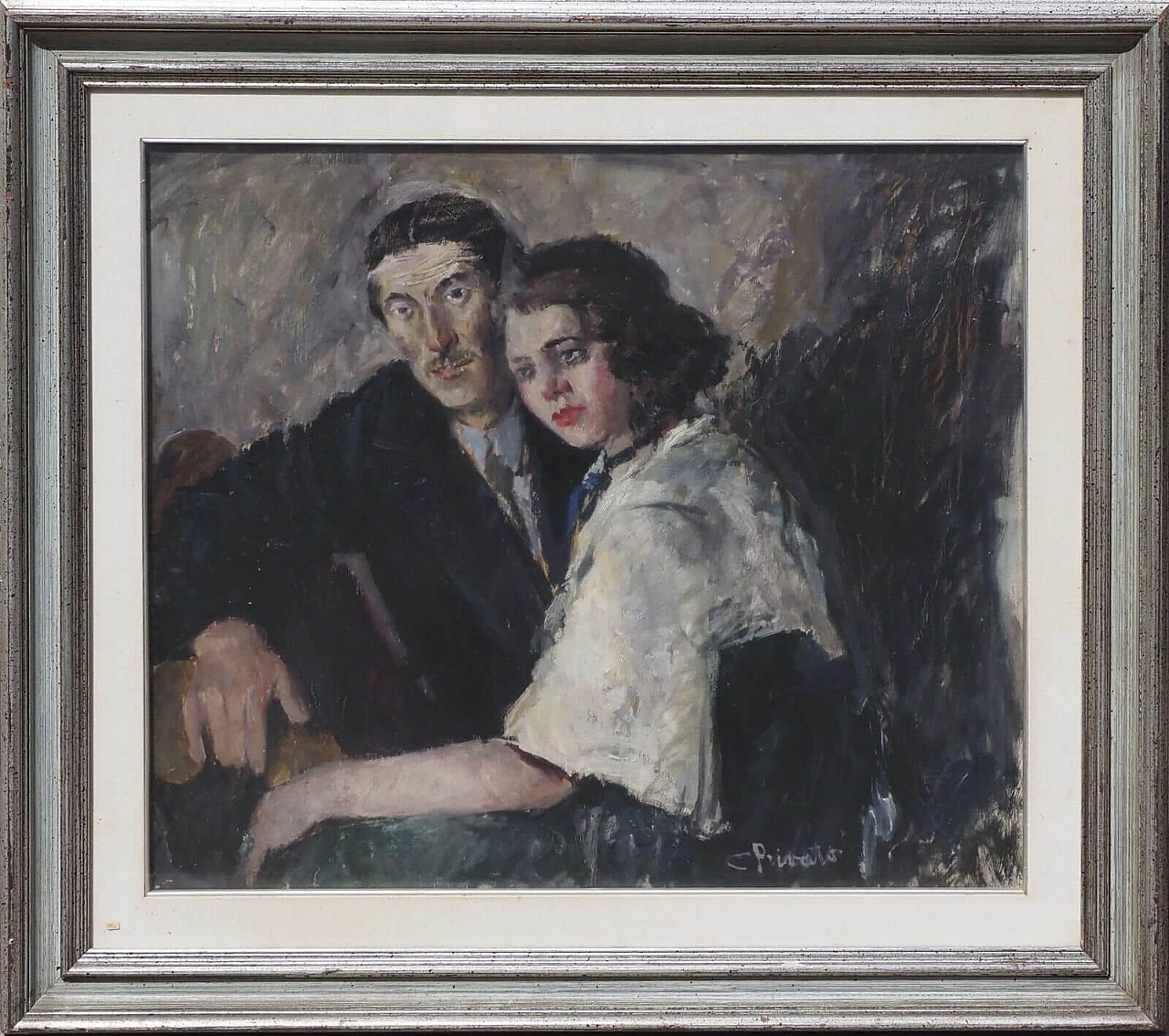
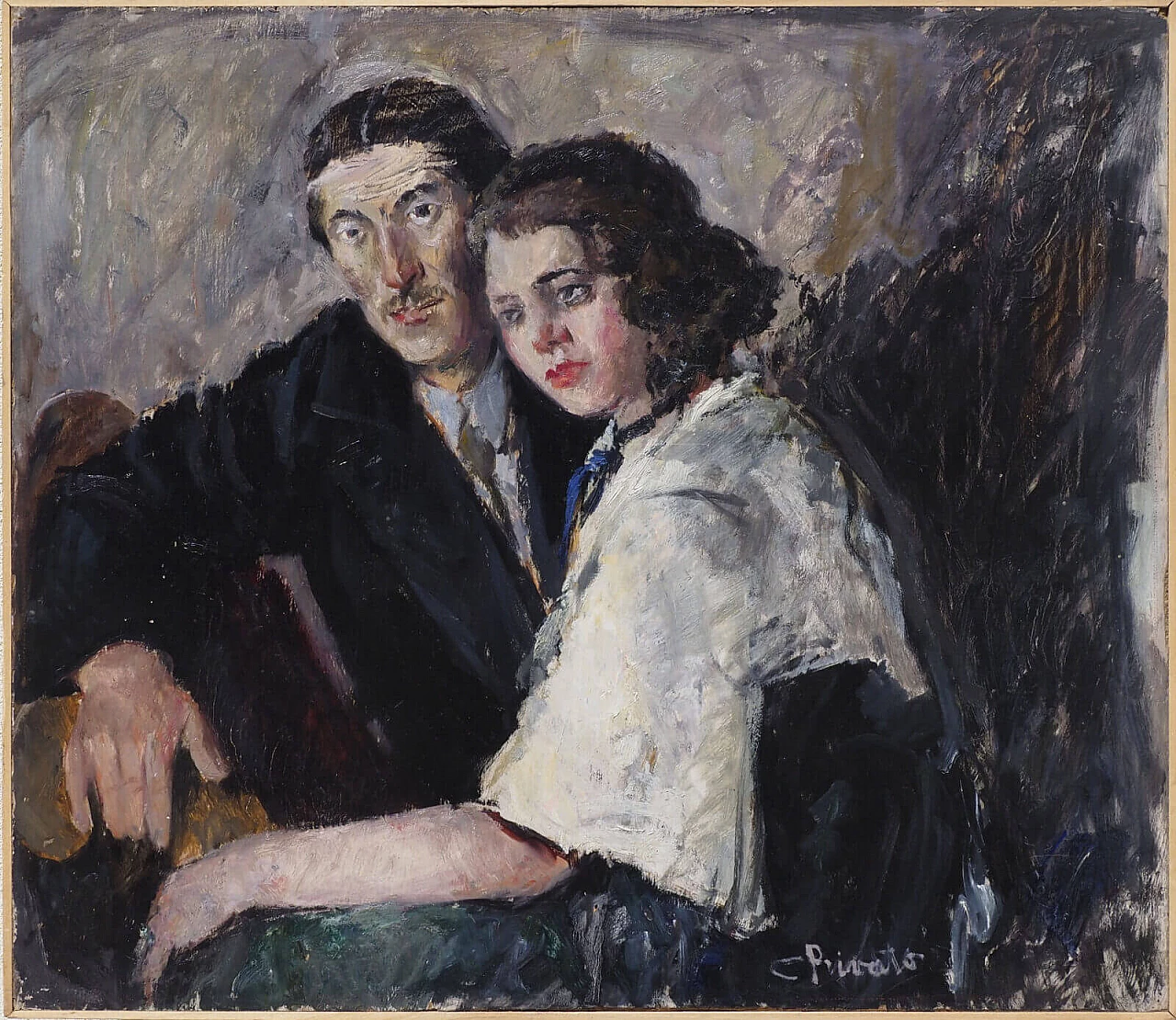
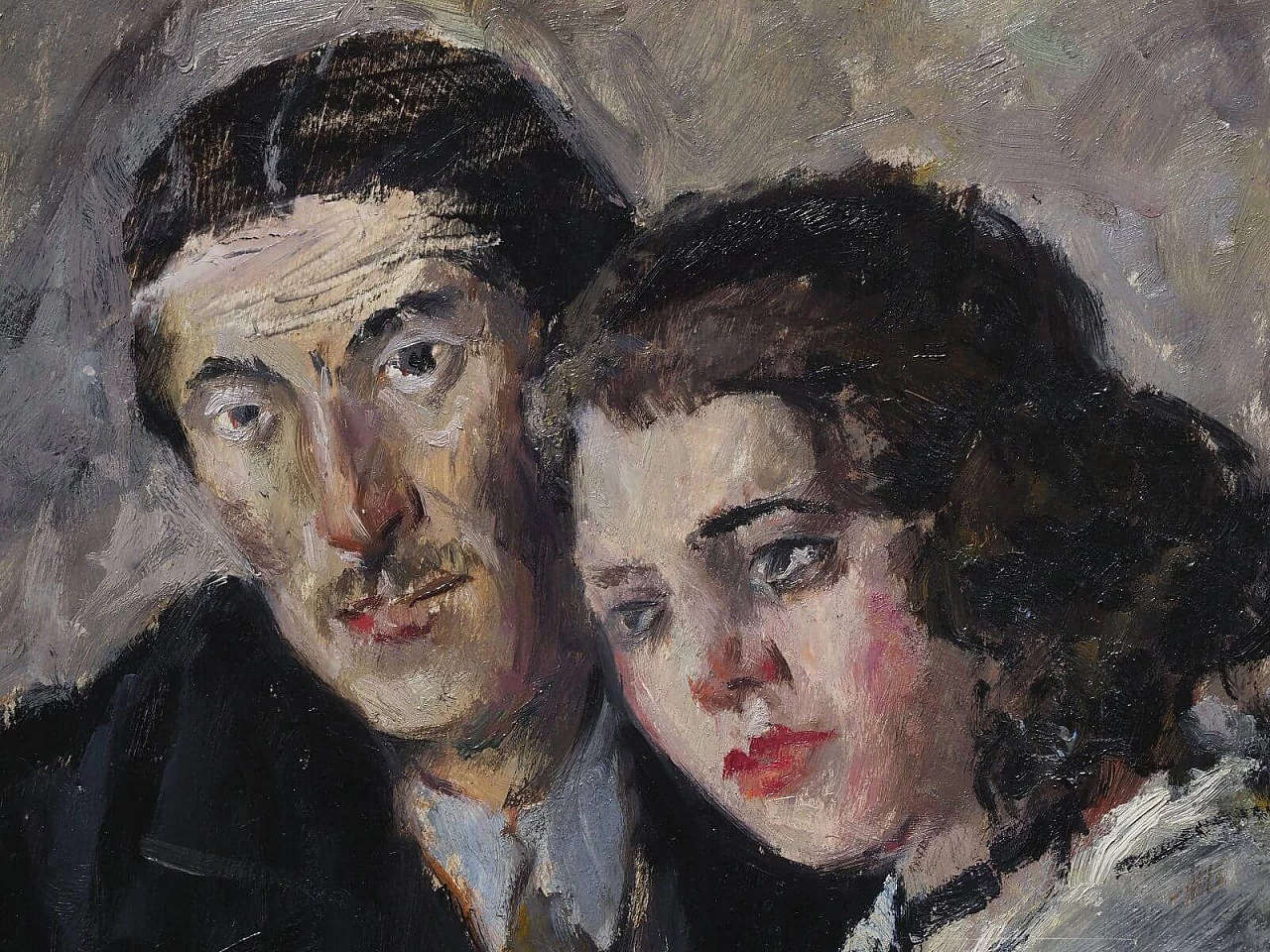
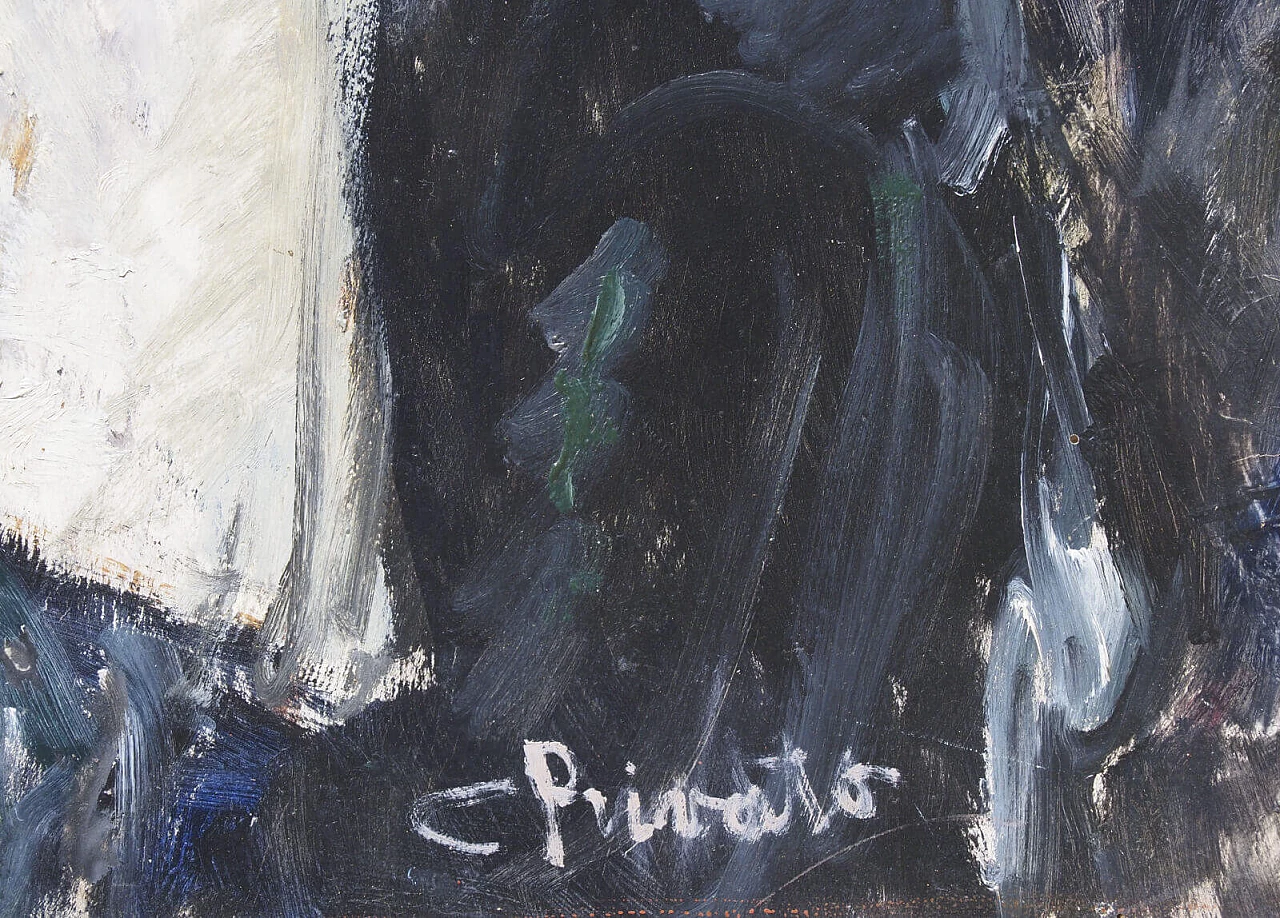
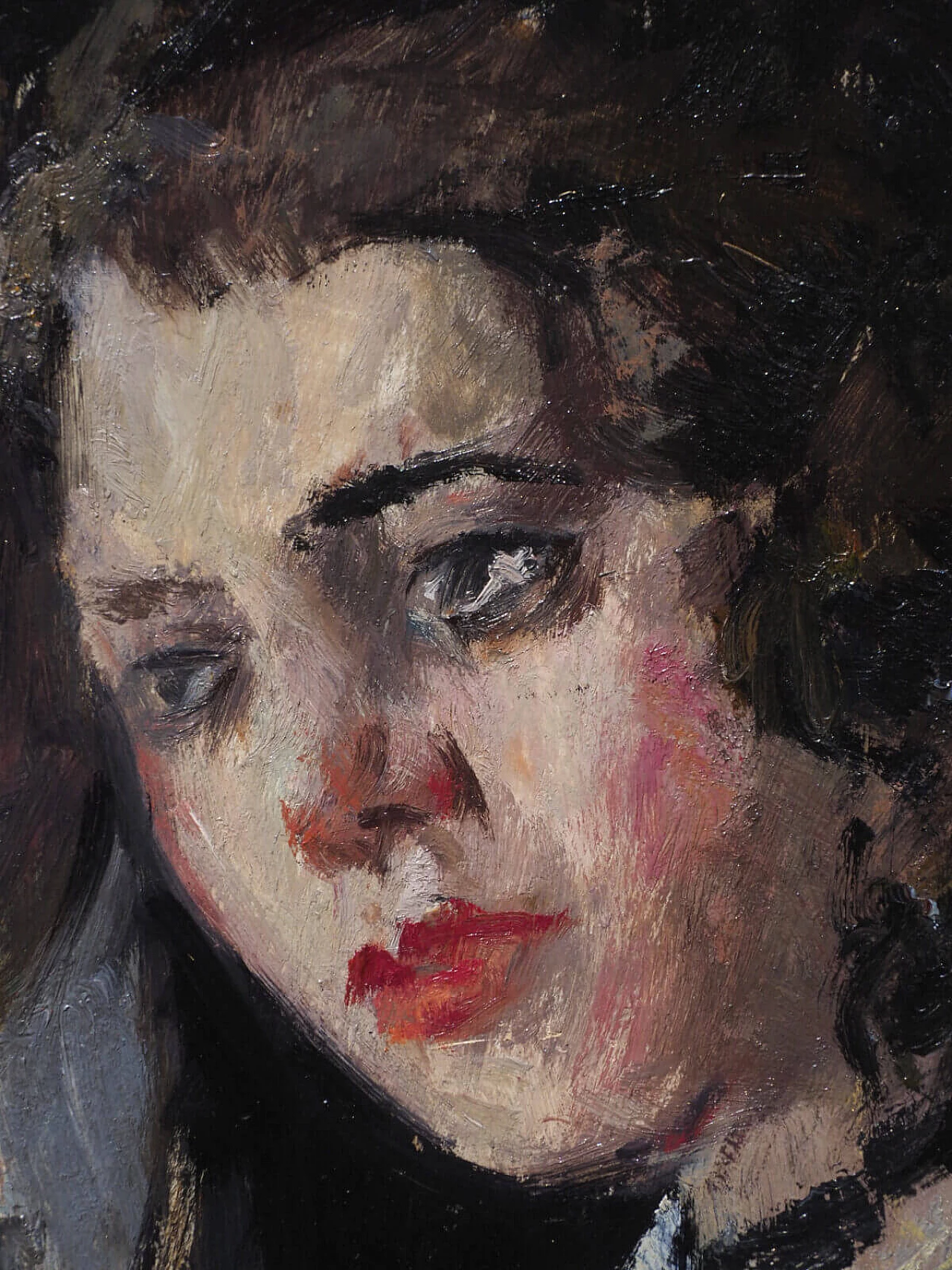
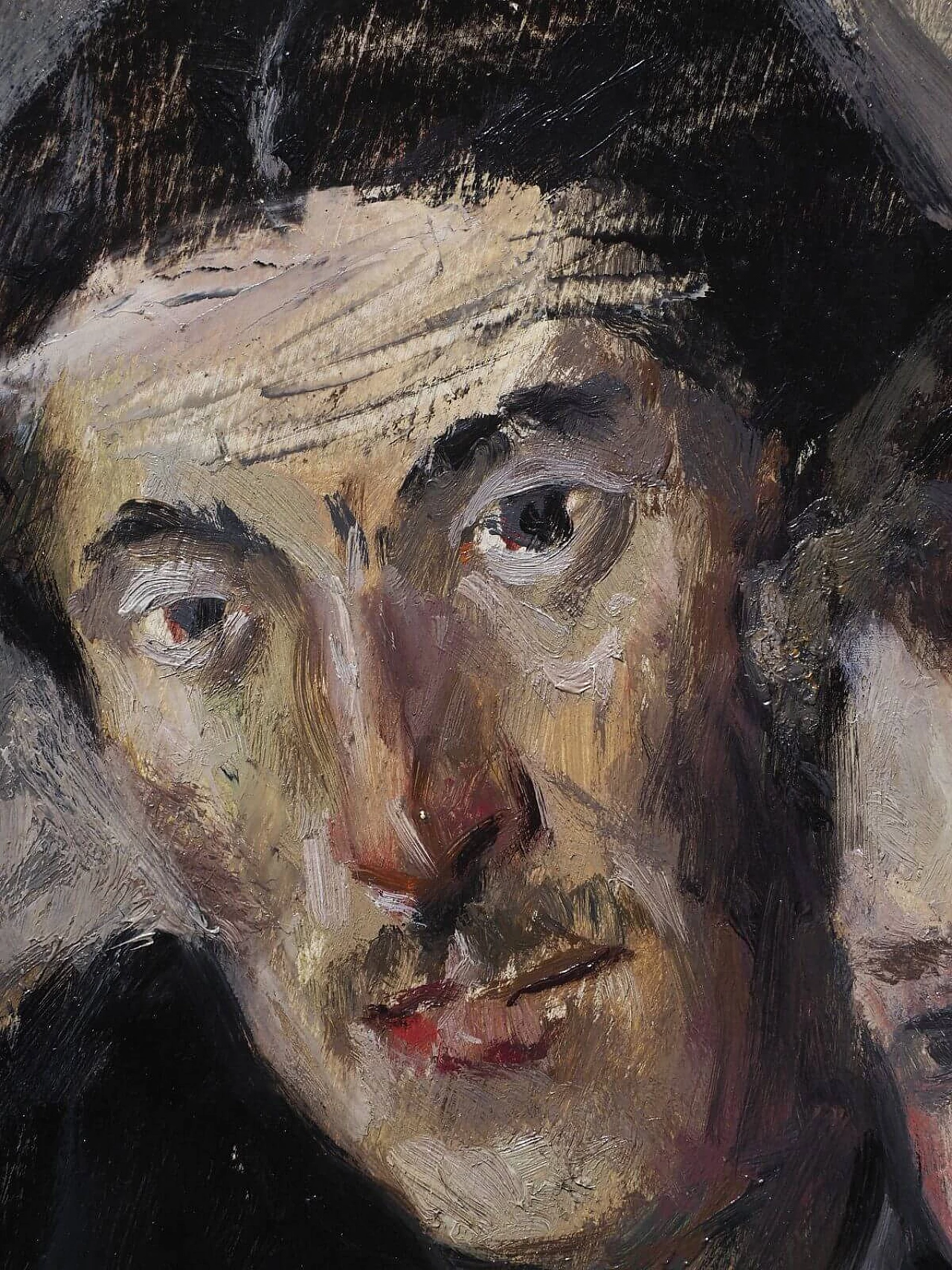
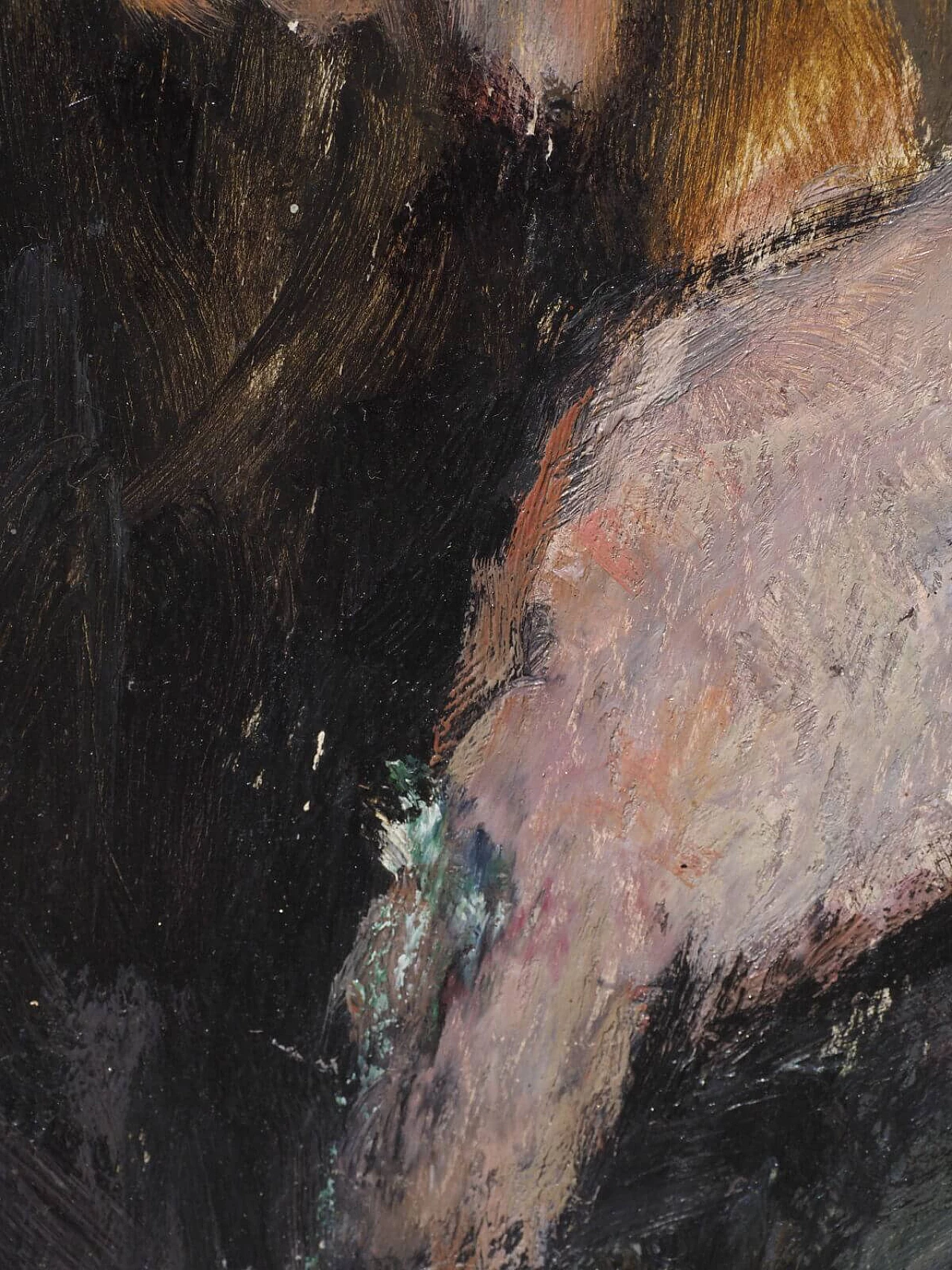
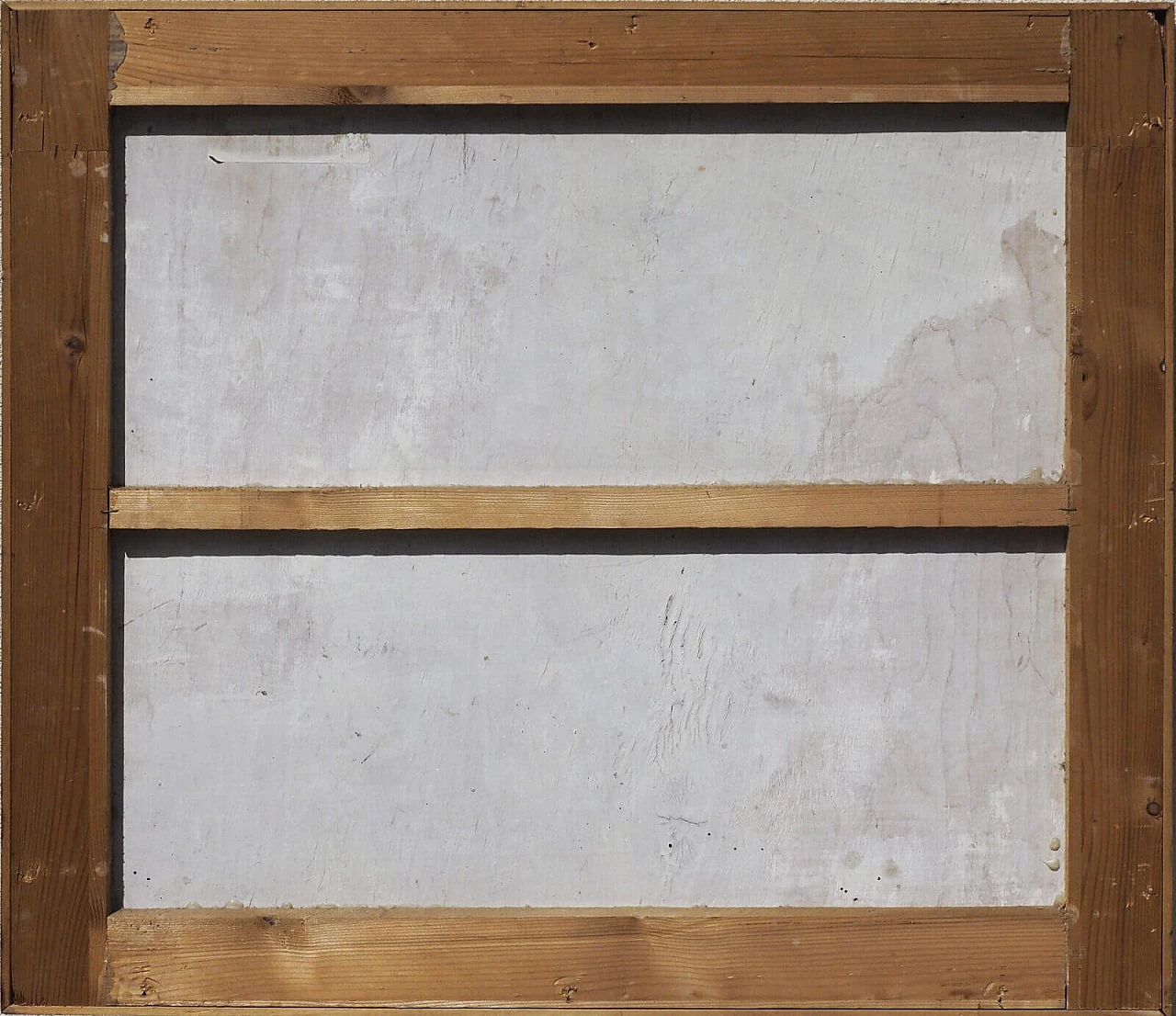
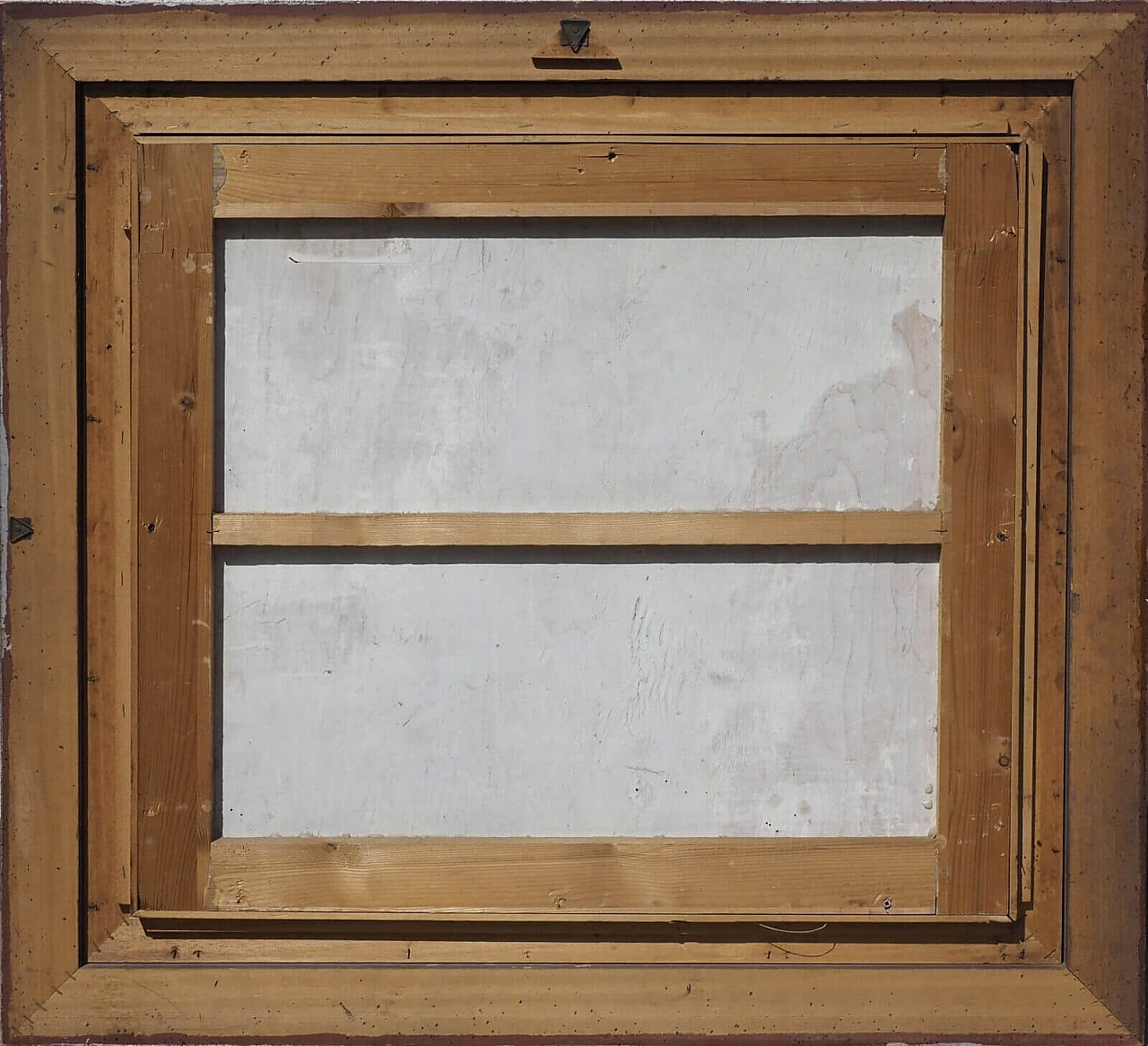
 SILVER Seller in Venezia, Italy
SILVER Seller in Venezia, Italy






.png)



